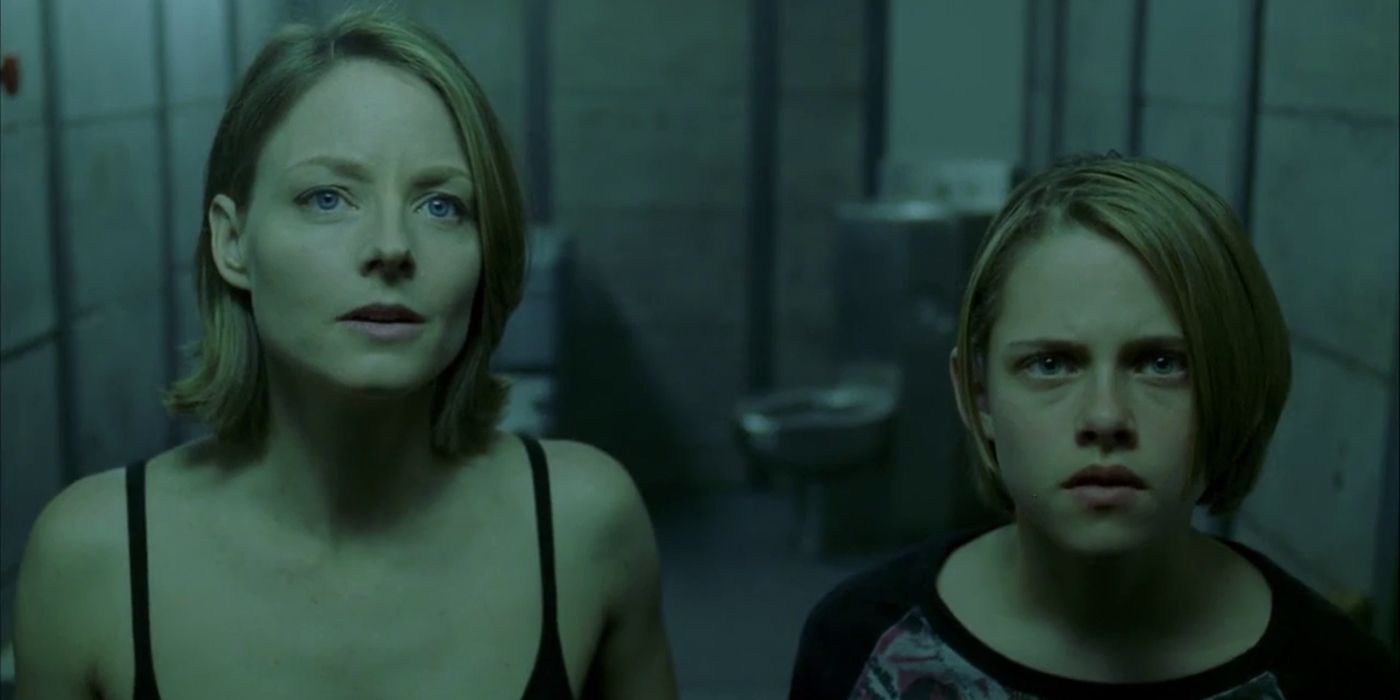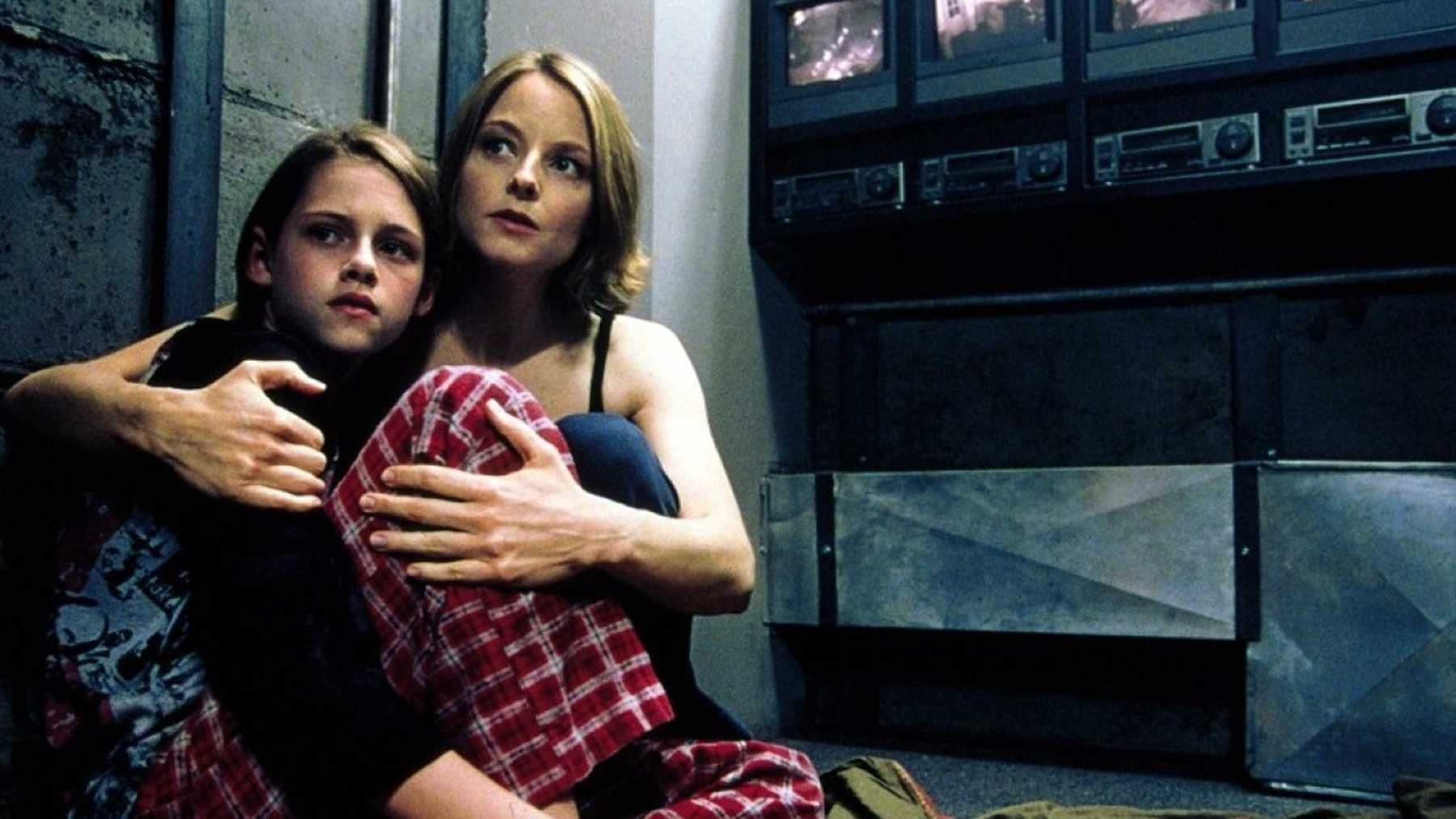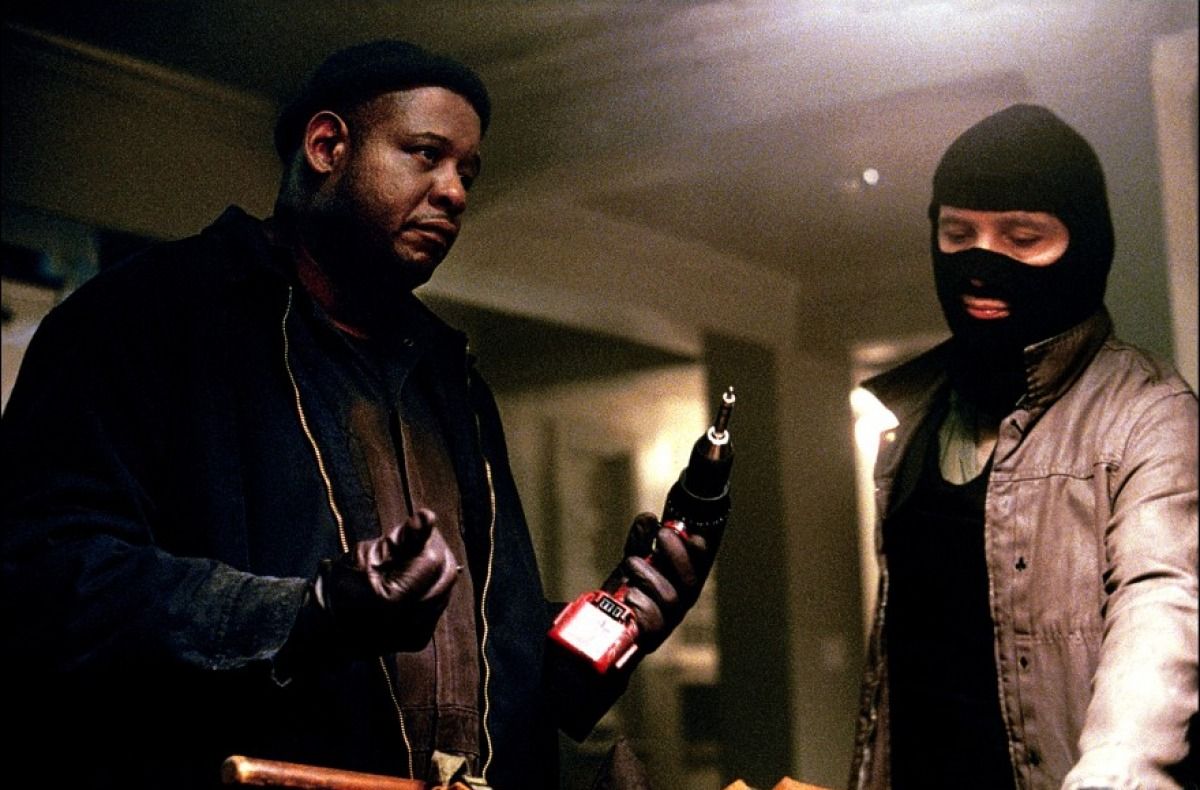In anticipation of the release of 'Mank' on December 4, this week Collider will be presenting original essays and features diving into the work of David Fincher.
It’s cliché to opine that a favorite filmmaker “needs to direct a Marvel movie”. It unfairly boxes in filmmakers from doing what they want to be doing, and it unfairly paints contemporary film fans with too broad of a “all I care about are Marvel movies!” brush. All of this is to say that I am very happy that David Fincher is making the films and television shows that David Fincher wants to make; I am more excited for the surprise of Mank than, say, the predictabilities of the Snyder Cut. And yet, whenever I revisit one of my favorites of his, the underrated 2002 thriller Panic Room, I cannot help but dream of what it would feel like for Fincher to make a Marvel movie, a Star Wars movie, a Fast and Furious movie, a Welcome to Blumhouse quickie, or any other B-movie-leaning popcorn flick he’d want to get his painstakingly crafting hands on.
The screenplay for Panic Room is written by David Koepp, the king of writing accessibly intelligent popcorn films. From his most exalted pieces of massively appealing blockbuster cinema (Jurassic Park) to his most underrated, quirky, individually focused one-offs (Premium Rush, now and forever), Koepp has the DNA for populist feature film storytelling down pat. From the beginning, Panic Room shows off these bonafides with no fat on the bone. It sets up our precociously withdrawn, edgy-but-caring daughter and her single mom, recently divorced and barely hanging on, instantly hitting an audience’s triggers of “hipper-than-usual sympathetic characters.” It gets these two in a new house, a juggernaut of a New York apartment with that titular panic room, with some funner-than-usual supporting characters that deliver keenly disseminated character-revealing one-liners (“You’re the first person to notice” tells our grumpy realtor to the mother about her realization that the bedroom has a weird amount of empty space, revealing her to be smarter than the average bear). And it gets three robbers invading their space, robbers that have their own quirks, personalities, and interior conflicts.
It’s a well-oiled Hollywood entertainment machine, with lines designed to pump out thrills, chills, laughs, and triumphs from its popcorn-munching audience; with a cleanly beated out three-act structure and delineated moments of planting and paying off; with a unilaterally happy ending for our heroes. It’s also an uncommonly intelligent, understated, grounded, and handsomely built machine, though not necessarily solely on the page. Many of these moments could come off trite, personalityless, and unbearably cheesy in lesser hands. For the best building of Koepp’s solid blueprint, another David needed to enter the picture.
Fincher is often painted as a technical wunderkind, a filmmaker more celebrated for his brains, technological acumen, command of craft, and trickery in storytelling than, say, a heart or humanity or handling of actors (in fact, the only story we tend to hear about Fincher and actors is that he makes them do too many takes). But the performances in Panic Room are uniformly sensational, honoring the time-tested tropes of much of the material’s elements while elevating them into a new realm of authenticity, soulfulness, and vulnerability. Jodie Foster stars as our single mom, and while she quickly replaced original actor Nicole Kidman after Kidman suffered an injury near the beginning of shooting (Kidman retains a cheeky voice cameo as the new woman in Foster’s ex-husband’s life), nothing about her performance feels like a last-minute fill-in. She embodies this character with grit, tenacity, strength, defeat, and a powerful sense of motherhood; many other films’ “mother screaming in agony as her daughter is in danger” scenes might play requisite, but Foster’s take feels uncomfortably, powerfully intimate, like we’re voyeuristically witnessing a desperate moment we shouldn’t be. Kristen Stewart, playing our daughter at the age of 11, elevates this potentially trope-filled role with such substance, selling kid-friendly lines like “My room. Definitely my room” when she sees the panic room not with wide-eyed, immature glee, but with pain behind her eyes and unrequited desire powering her brief moment of impulse (her later moments of childlike pain are delivered with the matter-of-factness of a hardened gumshoe, all to the film’s splendid credit). And Forest Whitaker, as our most sympathetic robber, devastates the picture, buckling it at its knees with such soulful yearning, such complicated motivations, such constantly searching eyes. He provides the film with its social commentary on classism and gives its otherwise popcorn-ready happy ending its bittersweet aftertaste we so crave from a Fincher film.
Beyond the exquisite vulnerabilities of the film’s performances, which raise Koepp’s script to such great heights, it is more than worth describing just how technically perfect Fincher’s work is as well; how effectively his “classic bag of tricks” engage with the new ones. The opening credits sequence is a set of wide, roving shots through New York City, oppressively grandiose titles given just as wide a stature as these buildings, Howard Shore's low-brass driven minor-key motif bringing to mind the eerily bombastic scores of other blockbuster films like Jaws (especially since we hear this Shore motif throughout the film during many "hero moments"). Despite the film’s contained nature, this opening sequence sets us up for a wide scope that we’d normally get in a city-hopping action film; the film just misdirects us by saving that wide scope for the interior lives of our characters. Fincher takes his cue from the opening moments of the script, which literally describe the physical components of our space, and shows us every inch of the space’s physicality, culminating in a bravura, CGI-boosted oner that flows through impossible crevasses, making sure our comprehension is crystal clear for the set pieces to come. The shot sequences and editing rhythms throughout the bulk of the picture are never unmotivated or unintentional, always sticky in their intrigue; the “rotating sideways on Foster unsure if someone’s in the home” is such an iconic move, it became the film’s poster. In this film, even more so than explicitly muscular Fincher works like Fight Club (his last film before Panic Room), I am aware of Fincher’s status as a physical filmmaker, a director who knows how to communicate so many interior truths with so many exterior facets, a skillset perfectly attuned to popcorn cinema-making.
Ultimately, Panic Room remains a compulsively rewatchable film for me because of all of these intersections between Fincher’s brilliant, bittersweet commitment to craft and “truth” and Koepp’s brilliant, accessible command of what an audience craves from their cinema. It’s emotional entertainment delivered at an unimpeachably expert-level of technical finesse, and these two modes of storytelling intertwine in such a divine piece of popcorn filmmaking that I can’t help but fantasize about more squarely down-the-middle entries from Fincher. If he ever decides to step away from his original, prestigious pieces of original work to try his hand at another one like this, I will be watching the screen like Foster and Stewart watch the panic room cameras--with bated, anticipated breath.



